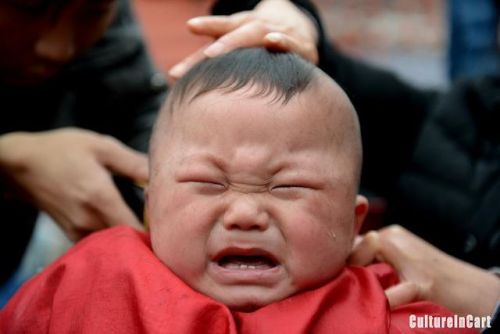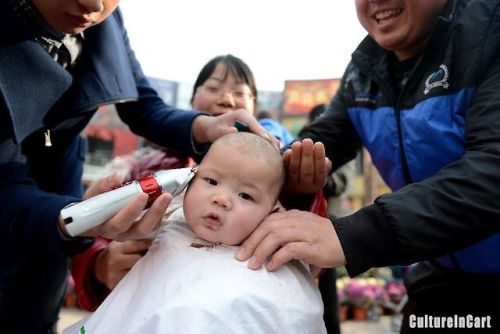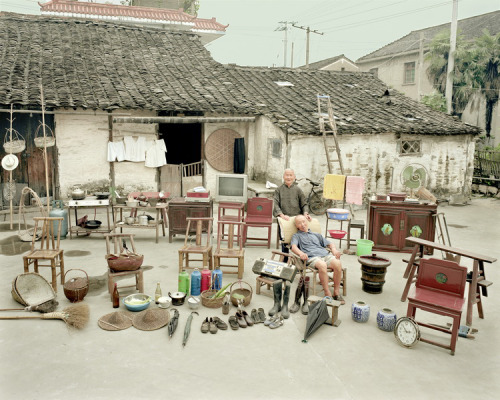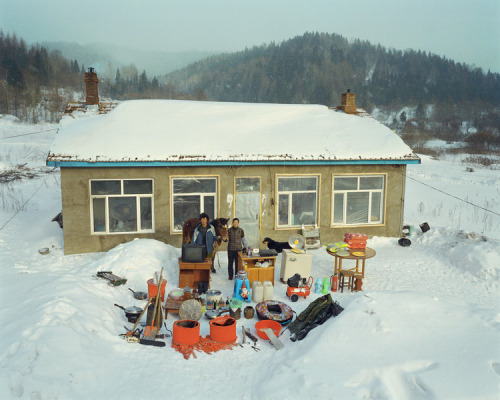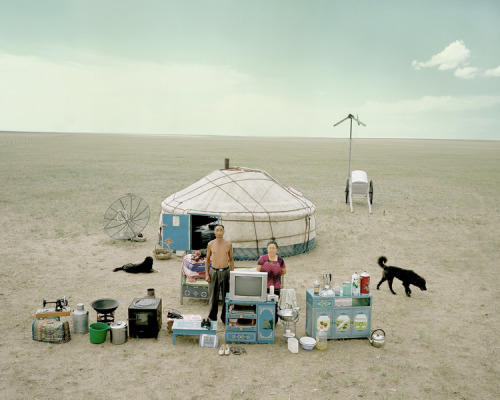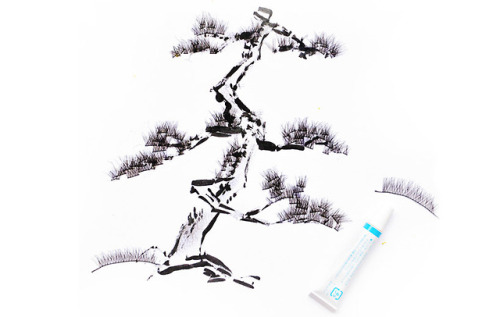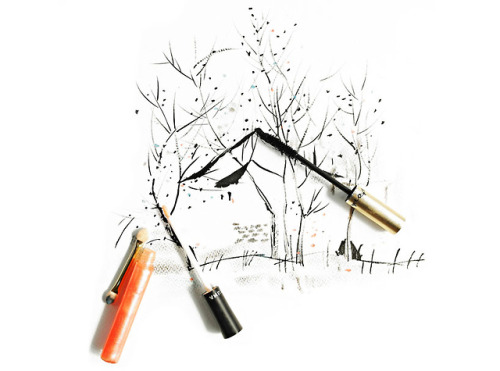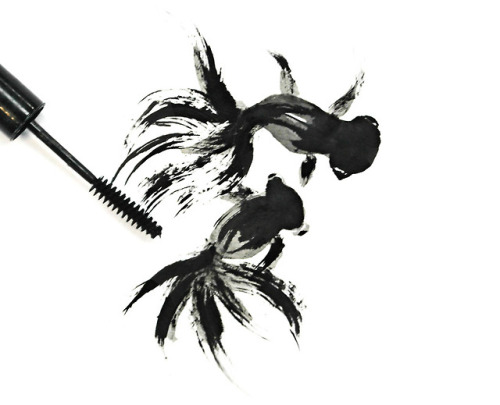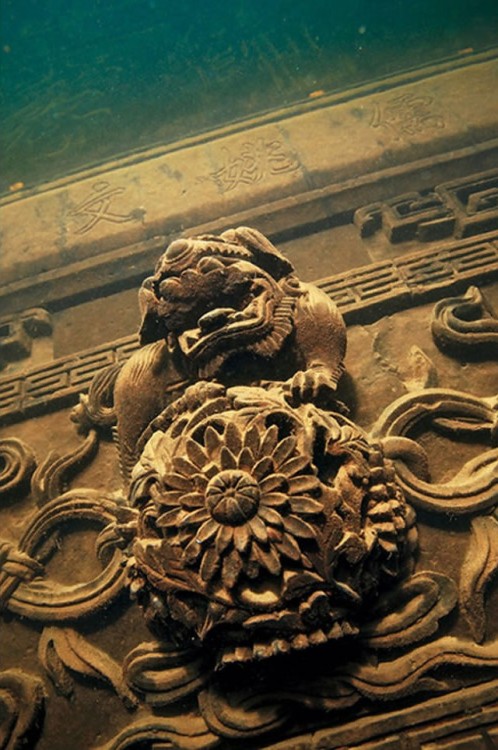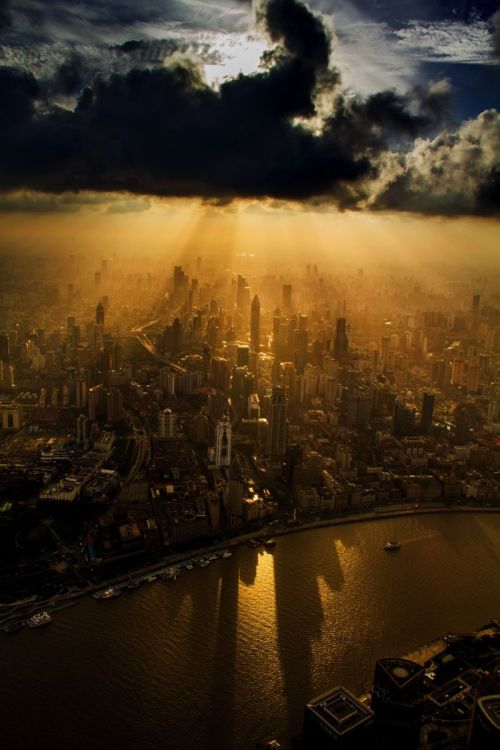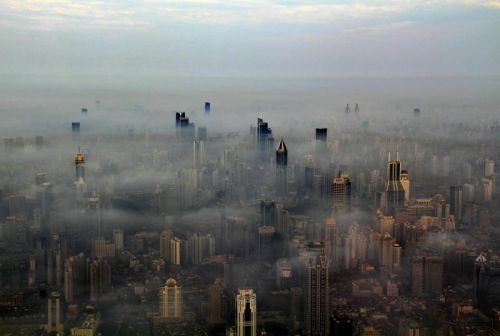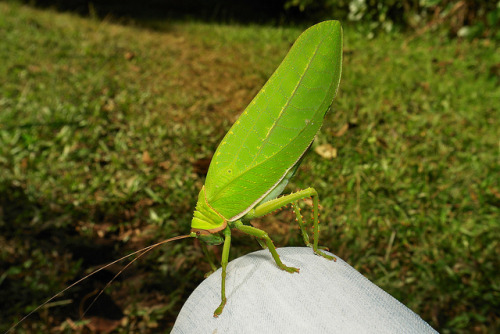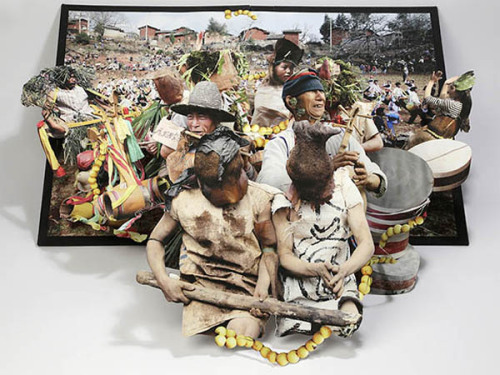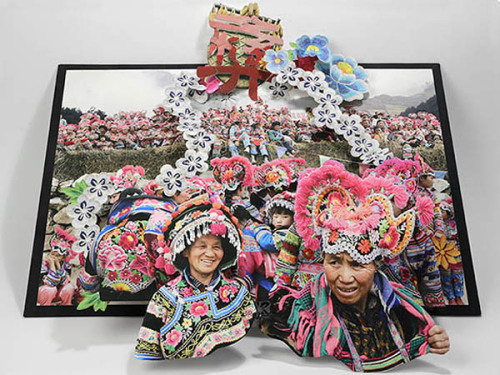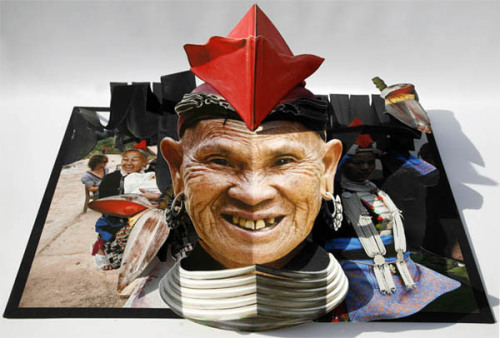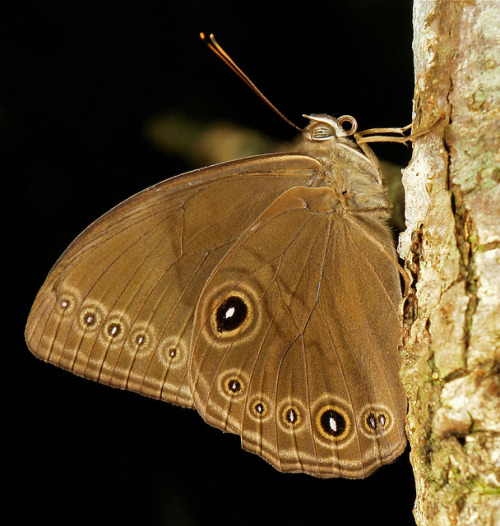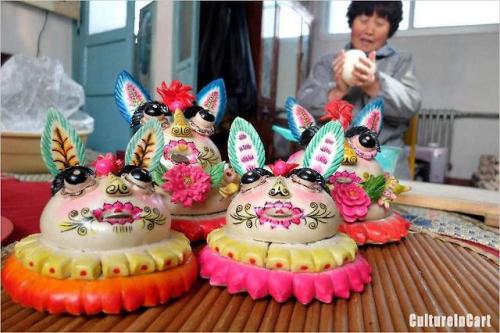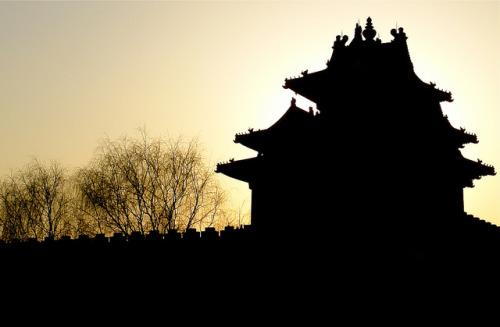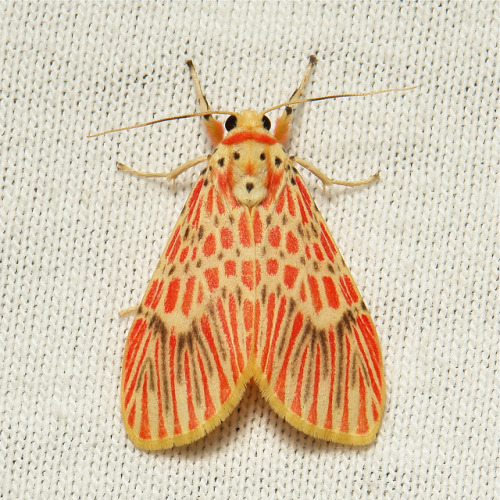#sinophile
Noctuid Moth (Erebus macrops, Catocalinae)
In Chinese folklore, legend has it that moths are human souls transformed. During Qing Ming (or Tomb Sweeping Festival) the souls will take the form of flying insects like butterflies and moths, to pay the living a visit.
The hills of Pu’er are dotted with hundreds of graves, some in congregations, others you will come across out of nowhere as individuals. Until recently, it was permitted (or at least unchallenged) to choose a family burial site on a hillside with a view at your discretion. Most of these tombs comprise a monumental headstone and altar and are tended annually at Qing Ming and/or on the anniversary of the deceased’s passing - the grave is cleaned, vegetation cleared, food offerings made and gaudy reflective decorations to deter evil spirits are erected.
Here is my “supernatural” story……
On one of the walking tracks I traverse regularly, is a pair of well-tended graves; one is a single, the other contains a couple. Last summer, on each occasion I passed, these mighty Erebus moths (they are as big as my hand) were in attendance. Always one on the single grave and two on the couple’s grave (pictured), tucked away in a dark corner under the tiled eaves of the tombstones. ( I am not kidding you).
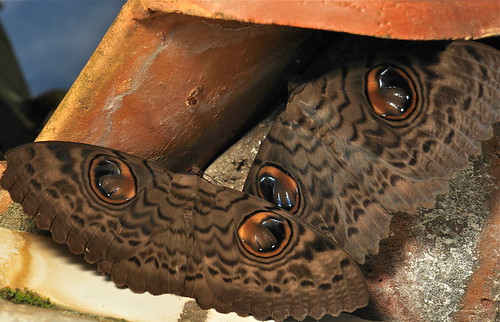
I always did my best not to disturb them as this is one “myth” I have come to respect. Occasionally though they flew away as I passed, yet obviously they returned. Presumably over the span of the summer months, these could not have been the same moths as they were invariably in pristine condition.
But regardless, it is sobering to think that the souls of the deceased are amongst us, and not too daunting to think they take the form of a noble moth.
bySinobug (itchydogimages) on Flickr.
Pu’er, Yunnan, China
See more Chinese moths on my Flickr site HERE…..
Post link
DRAGON HEAD RAISING DAY: IT’S HAIRCUT TIME
“On the second day of the second month (of the lunar calendar), the dragon raises its head” - so goes the Chinese idiom, 二月二,龙抬头 (èr yuè èr, lóng táitóu).
This year’s Dragon Head Raising Day fell on March 2, 2014.
The most well-known tradition on this day is the cutting of hair and millions of people nationwide will get their haircut on what must be a great day for barbers. On this day, if you cut your hair it is believed you will have good fortune for the rest of the year. In addition, Chinese refrain from getting haircuts during the first lunar month of the year as it is believed that 正月剃头死舅舅 (if you cut your hair in the first month, your uncle will die)–bad news for kindly uncles everywhere.
Read more HERE…..
Post link
This attractive lizard inhabits various forest habitats including dry deciduous, coastal, and moist evergreen. It can be spotted on tree trunks, often low down.
Its identifying features are the single spine above each eye, and twin spines above the typanum (external ear-drum). Patterning and colouration can include various shades of brown, green and grey. Males are generally darker during the breeding season. The fingers and toes are of great length.
The Forest Crested Lizard ranges from India through Burma, southern China and Thailand to northern Peninsular Malaysia.

bySinobug (itchydogimages) on Flickr.
Pu'er, Yunnan, China
See other posts in this LIZARDS of CHINAseriesHERE.
See more images from China on my Flickr site HERE…..
Post link
Chinese Families and Their Possessions
A fascinating set of photos by Huang Qingjun.
Nearly 20% of the world’s people live in China. That fact makes the country an incredibly diverse place.
Huang Qingjun travels the expansive nation photographing families alongside all of their possessions.
Post link
Makeup Art.
These Chinese New Year celebration pieces by ‘Red’ Hong Yi were completed using only makeup products!
Post link
Lion City.
An amazing ancient Chinese city now completed submerged under the clear waters of Qiandao Lake.
Lost Underwater Lion City:Rediscovery of China’s ‘Atlantis’
Qiandao Lake is a man-made lake located in Chun’an County, China, where archeologists have discovered in 2001 ruins of an underwater city. The city is at a depth of 26-40 meters and was named “Lion City”. There would have been 290,000 people living in this city during more than 1300 years.
Post link
Shanghai From A Crane.
Crane operator by day, aerial photographer by day too.
Just glancing at the epic aerial shots above, you’d think they were captured by a professional photographer.
In fact, these amazing photos were taken by Wei Gensheng, a crane operator currently working in Shanghai.
Crane Operator Takes Stunning Aerial Photos of Shanghai
viaSLR Lounge
Post link
Chinese Insects and Spiders
A whole heap more
Chinese Caterpillars
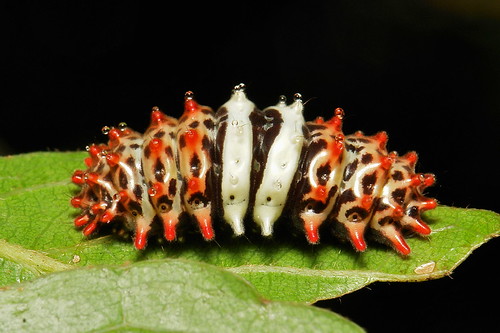
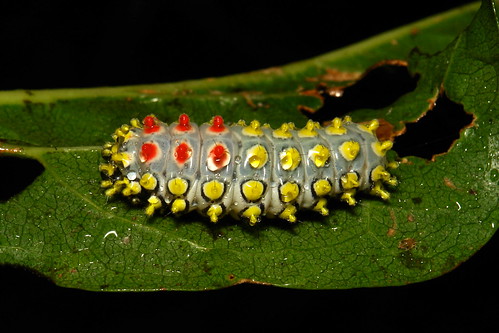

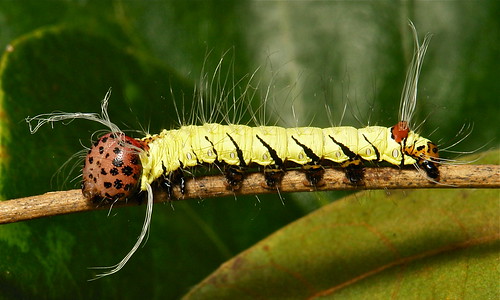
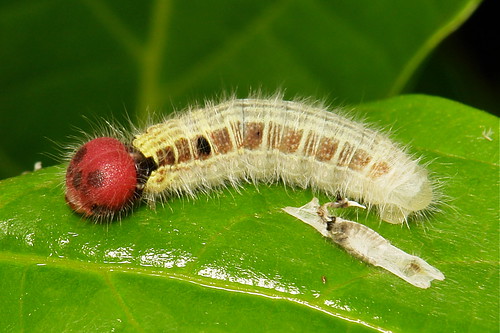
Click images to see identification (linked to their respective Flickr pages).
See others in the series of Chinese Caterpillars tumblr posts HERE.
See more Chinese caterpillars on my Flickr site HERE…..
Post link
There’s something on my knee……
Giant False Leaf Katydid (Pseudophyllus titan, Pseudophyllinae, Tettigoniidae)
If you have ever travelled or lived in China, you quickly observe that crowds form at the drop of a hat, whether it be to watch a game of chequers, minor domestic arguments, traffic accidents…and for foreigners. This happens in the big cities as much as it does in the more remote provinces, but when you are one of just a handful of 外国人(foreigners) in a third- or fourth-tier Chinese city and you are wielding a big camera with a flash diffuser AND you have China’s largest Orthopteran, P.titan (which very few Chinese people would be even aware exists), performing a threat display on your knee in the local park, the exponentially growing band of onlookers stands and stares in silent and, I will admit, unsettling curiosity.
So picture, if you will, the unseen scene in this image. I politely indicated that the crowd move aside so that I didn’t have them in the background of this shot. Behind and to the sides of me however, is a throng maybe two or three deep slowly creeping closer and closer as new arrivals at the rear of the pack push and strain to see what the commotion is.
I should have put my hat on the ground and collected some change…..
See more images of Pseudophyllus titan in my Flickr photostream HERE.
byitchydogimages on Flickr.
Pu'er, Yunnan, China
See more images from China on my Flickr site HERE…..
Post link
Chinese Insects and Spiders
…..and more
“TRUE” BUGS of China
Members of the Hemipteran suborder Heteroptera are known as “true bugs”. They have very distinctive front wings, called hemelytra, in which the basal half is leathery and the apical half is membranous. At rest, these wings cross over one another to lie flat along the insect’s back. These insects also have elongate, piercing-sucking mouthparts in which the mandibles and maxillae are long and thread-like, interlocking with one another to form a flexible feeding tube (proboscis) containing both a food channel and a salivary channel.
The immature stages of the heteropteran true bugs (nymphs) structurally resemble the adult form but are always lacking wings.
True bugs are generally well-known and include the stink bugs, assassin bugs, shield bugs, squash bugs and the aquatic water boatmen.
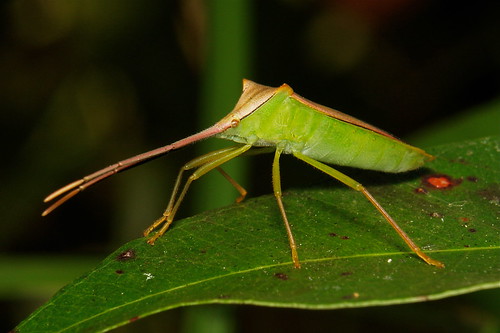

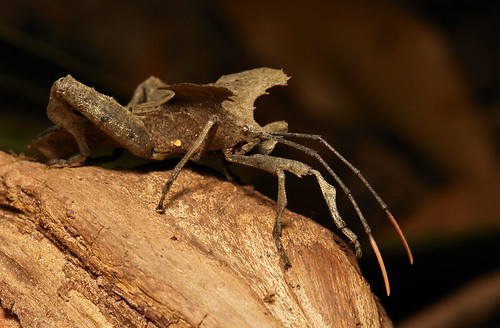

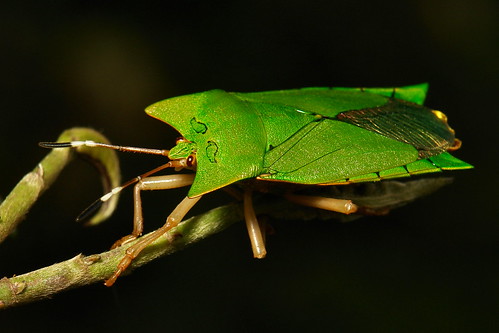
Click images to see identification (linked to their respective Flickr pages).
See others in the series of “TRUE” BUGS of China tumblr posts HERE.
bySinobug (itchydogimages) on Flickr.
Pu’er, Yunnan, China
See more Chinese true bugs and hoppers on my Flickr site HERE…..
Post link
CHINESE LABOUR CORPS
In the tiny French commune of Noyellessur-Mer, facing the English Channel, a stone Chinese archway rises incongruously at a cemetery entrance. Inside, over 800 graves are marked with Chinese names, birthplaces, death-dates between 1916 and 1920, and Biblical phrases in Chinese and English.
The dead of Noyelles came from the Chinese Labour Corps (CLC), a force of 100,000 Chinese who, from 1916 onward, dug many of the trenches that criss-crossed war-torn France. The British-led CLC, and another 40,000 men working for the French, carved out defences, built barricades, fixed railways, and mended telegraph wire. The Chinese Labour Corps was the creation of wily Chinese statesman Liang Shiyi (梁士诒), once the technophile Minister of Railways under the Qing Dynasty (1616-1911). It was an attempt to get on what he saw as the winning side of the war and ultimately better China’s place. Germany, like the other Great Powers, held considerable concessions in China, and siding with the Allies, even if only quietly at first, would position China to reclaim those colonies at war’s end.
It was appropriate enough, then, that the majority of the laborers he negotiated to send to France were from Shandong, where the German concessions were sited. The British and French officials involved in negotiating the contracts were looking for strong Northerners, and the men were said to be often “six feet tall”, a striking height at the time.
The legal status of the laborers was somewhat dubious; as, officially, a non-belligerent China could not supply military aid to the Allies without violating its neutrality. The Germans protested against the creation of the labour corps to the Chinese government, which replied by specifying that this was a purely civilian deal, handled through a conveniently created “private company”, the Huimin Company, and if this supply of labor happened to be used for martial purposes, that was nothing to do with them. That the Huimin Company had been brought into existence by Liang Shiyi purely for this purpose was not allowed to trouble this legal fiction. The laborers themselves have left little record. Almost entirely illiterate, their histories were set down by others, whether the British offi cers who dealt with them or the educated Chinese who accompanied them as translators. Farmers and migrants from rural villages, their transition into the war was also a transition into modernity.
As they entered “the sausage machine” of processing, their traditional queues were chopped off; they were washed, fingerprinted, and given a number,not a name. In his book, Strangers on the Western Front, Guoqi Xu demonstrated why this mechanistic process was made necessary; in the book, a British offi cer is recorded saying, “The man didn’t know his own name. If you questioned him, he’d say ‘Well, I come from the Wong family village, so my name is probably Wong.’ You’d say, ‘All right, well what is your personal name?’ and he’d grin and say ‘Wong’. We’d say, ‘Well, what are you called at home?’ and he’d say ‘Well, I’m known as Number Five, or Little Dog, or Big Nose.’
But the conditions were praised by the workers, who enjoyed the food, the hot baths with soap, and the clean housing…
Post link
Chinese Insects and Spiders
….more
Butterflies of China
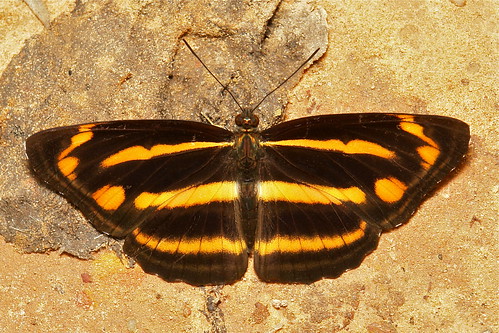
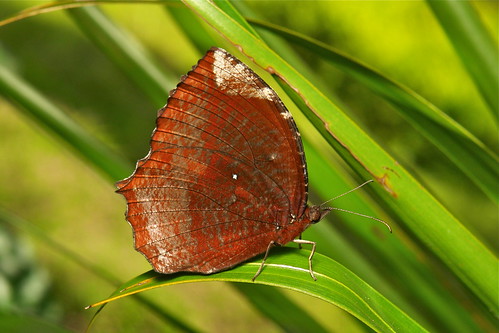
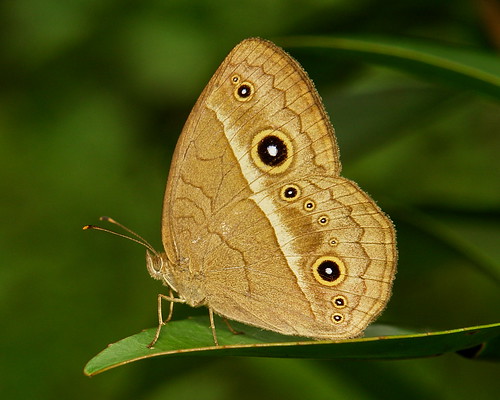

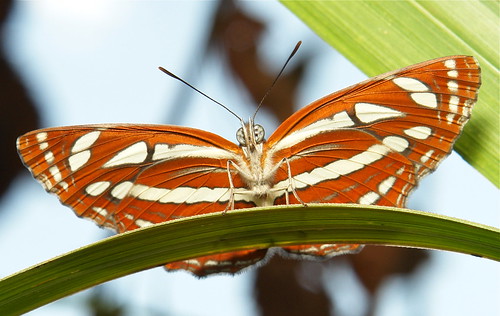
Click images to see identification (linked to their respective Flickr pages).
See my other Butterflies of China tumblr posts HERE.
See more Chinese butterflies on my Flickr site HERE…..
Post link
Villager Sun Xuetang makes steamed buns with patterns in the Zhuqiao Town, Laizhou City, east #China’s Shandong Province, Jan. 15, 2014. Steamed bun with colourful patterns, listed as an intangible heritage of Shandong, is a traditional staple food during the Spring Festival in Jiaodong.
Post link
This is the view from the hilltop lookout over Pu’er City, Yunnan (yes the panoramic view is marred by multiple high tension electricity pylons and cables which miraculously disappear in promotional images for the city) as midnight approaches to bring in the Lunar New Year on January 31st, 2014 - The Year of the Horse. This is not a huge city by Chinese standards (a population in the surrounding district approaching 2.5 million), so I would consider this display quite impressive. Furthermore, the view into the distance is obscured by a heavy pall of smoke already in situ from the preceding hours leading up to midnight. I can never get tired of the enormity of this.
What you see is a healthy mix of tradition, male one-upmanship (“My box of fireworks is bigger than yours….oh….you have two boxes!”), a higher (probably non-disposable but increasingly disposable) income and a terrifying disregard for life, limb, property and the environment (but even I will disregard the latter in the heat of the moment).
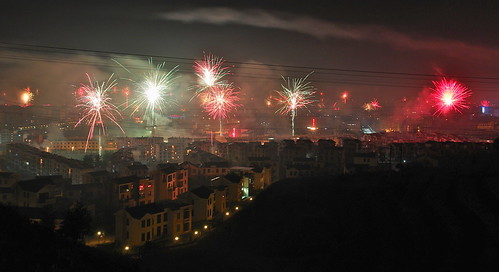
Love it or hate it, the sheer spectacle and abuse to one’s senses of a nation igniting fireworks, both on the stroke of midnight and for the proceeding two weeks until Lantern Festival (this year on February 14th), is a sight, smell, sound, taste and emotion second to none (in my humble opinion). This is not an orchestrated “Fourth of July” display or New Year’s Eve extravaganza, this is just every man and his dog letting off steam and sulphur fumes from their front doorstep, the roadside curb, the middle of the road, parks, carparks and rooftops either pooled with their neighbors or privately, as a deterrent to bad spirits in the upcoming twelve months.
This is my seventh New Year’s period spent in China. I arrived on New Year’s Eve 2008, flying into Beijing with the city below a carpet of (mainly red I recall) sky bursts. Subsequently, I have “survived” celebrations several times now in Beijing, in Chongqing, Sichuan, and this is my third in Pu’er, Yunnan.
Rich or poor (and these pyrotechnics are not cheap by Chinese standards), first-tier city or rural village, every man and his (only) son will light at least one fuse (and likely many more) during the Spring Festival period. With all considerations for pollution, waste and hazard to person and property aside, Chinese New Year is moving, exciting and illuminating. Imagine Fourth of July, New Year’s celebrations on Sydney Harbour, an Olympic opening ceremony and the sound and light show at any major techno party ever held combined and occurring simultaneously within sight and earshot, both on the ground and high above your head, and you are still not even close…..
Happy New Year to you all…… Gong Xi Fa Cai!
byitchydogimages on Flickr.
Pu'er, Yunnan, China
See more images from China on my Flickr site HERE…..
Post link
Mid-instar Chinese Oak Silkmoth Caterpillar (Antheraea pernyi, Saturniidae)
The Chinese (Oak) Tussah Moth (or “Chinese Tasar Moth”) is originally from southern China but as it has been used for tussah silk (a wild silk) production, they have been distributed more widely across subtropical and tropical Asia.
Tussah silk is the best-known and most widely used of all the wild silks. Moths have been raised outdoors on oak trees in China for more than two millennia. The natural color of the silk is a pinkish beige but depends on the climate and soil. In the 1970s and 1980s China expanded tussah sericulture to most of its provinces, but has since abandoned these efforts in the South. Tussah is now primarily grown in the Northeast, in the provinces of Shandong, Liaoning, and Hebei. It was introduced into Japan in 1877 where it was cultivated locally on a small scale in the 20th century. Tussah silk is also raised in both Koreas.
Because it is so easy to rear, Antheraea pernyi has been used in laboratories around the world to study diapause, endocrinology, and other aspects of insect physiology.
The reeled silk has a smooth sheen like domestic silk, but the rougher spun silk is highly favored by designers of high-end fashion to make women’s and men’s suits, blazers, dresses, shirts, scarves, and other garments and accessories. Sometimes tussah is blended with cotton or synthetic fibres. Tussah silk floss is also used in quilting to make duvets.
On a more technical note, Antheraea pernyi silk has more similar sequences to spider dragline silk than the silk from its domestic counterpart, Bombyx mori. Spider dragline silk exhibits exceptional strength, toughness, and resistance to mechanical compression, properties that rival those of synthetic high-performance fibres such as Kevlar. Consequently, there is a wide spread interest in mimicking natural silks in order to produce new classes of high-performance materials and tussah silk has potential as a resource for biospinning spider dragline silk.
bySinobug (itchydogimages) on Flickr.
Pu’er, Yunnan, China
See more Chinese caterpillars on my Flickr site HERE…..
Post link
Silhouette of the North-west Guard Tower of the Forbidden City against a Winter Sunset
byitchydogimages on Flickr.
Forbidden City / Palace Museum
Beijing, China
See more images from China on my Flickr site HERE…..
Post link
Chinese Insects and Spiders
Moths of China (Beijing and Yunnan)
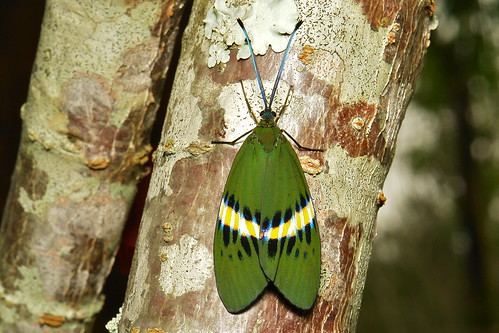
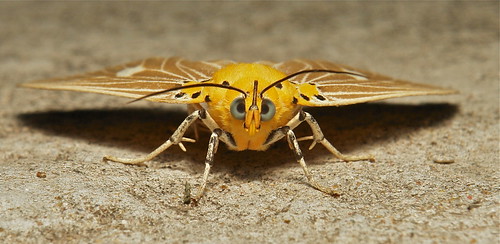
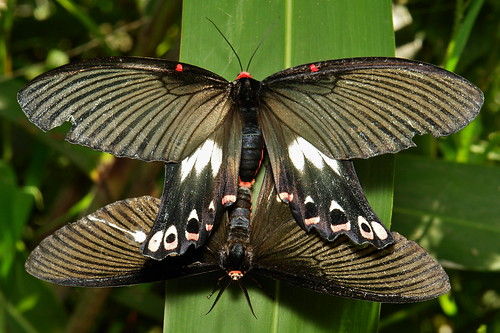

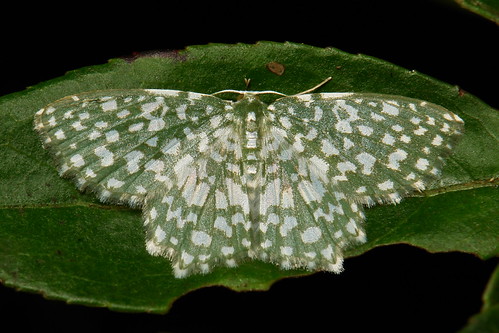
Click images to see identification (linked to their respective Flickr pages).
See my other Moths of China tumblr posts HERE.
See more Chinese moths on my Flickr site HERE…..
Post link
The western wall of Zhongnanhai government compound along Fuyou Avenue looking north from the corner of West Chang'an Avenue.
If you visit Beijing and the major tourist walking routes, you will pass this complex and its flagpoled entrance with immaculately presented armed guards and police presence (uniformed and otherwise) and wonder what it is and what lies behind the walls. I would love the opportunity to have a look inside but rest assured the likelihood of this happening is less than zero.
Zhongnanhai is often used as a metonym for the Chinese leadership at large (in the same sense that the term White House frequently refers to the President of the United States and his associates). The state leaders, including Xi Jinping and Hu Jintao, and other top CPC and PRC leadership figures carry out many of their day-to-day administrative activities inside the compound, such as meetings with foreign dignitaries. China Central Television frequently shows footage of meetings inside the compound, but limits its coverage largely to views of the interior of buildings.
The complex is blessed with a remarkable history, practically unseen by the contempory public eye…..
The name of the Zhongnanhai complex, located west of the Forbidden City, means “central and southern seas/lakes”, referring to two lakes (the “Central Sea” and “Southern Sea”) located within the compound; it is sometimes translated as “Sea Palaces”. These two lakes are part of a series of irrigation projects carried out during the construction of the nearby Forbidden City. Also part of the same system is the “Northern Sea”, or “Beihai”, now a public park.
After the Qing Dynasty established its capital in Beijing, the government reduced the size of this royal park to within a small walled area around the three lakes. Several successive emperors built pavilions and houses along the lake shores, where they would carry out government duties in the summer. During the reign of the Empress Dowager Cixi, the Empress Dowager and the Emperor would often live in the Zhongnanhai compound, travelling to the Forbidden City only for ceremonial duties.
During the Boxer Rebellion of 1900, the Russian army occupied Zhongnanhai. Almost all artifacts and decorations in the compound were looted. Later, the Eight-Nation Alliance commander also lived in Zhongnanhai. When Puyi was crowned Emperor, his father as the Prince Regent lived for a short time in the compound.
Zhongnanhai attained political significance during the Republic of China era, when the Beiyang Government under Yuan Shikai placed its headquarters in the Zhongnanhai compound from 1911. This decision was made because the regime wished to house its government very close to the historical centre of power, the Forbidden City, but could not use the Forbidden City itself because the abdicated Emperor Puyi still lived there.
Zhongnanhai served as a government centre again from the early days of the People’s Republic of China, founded in 1949, which built many of the structures in the compound. The compound housed the Communist Party of China Central Committee, as well as the State Council. Early leaders, such as Mao Zedong, Zhou Enlai, and Deng Xiaoping lived in the compound.
SinceZhongnanhai became the central government compound, it has been mostly inaccessible to the general public in the same way the Forbidden City was during the imperial era. The exception to this was during the years of relative freedom following the end of the Cultural Revolution, when the compound was open to members of the public, who could obtain tickets to visit the compound from relevant government authorities. Following the political turmoil that culminated in the Tiananmen Square protests of 1989, security was greatly increased. Access has now been closed to the general public, with numerous plain clothed military personnel patrolling the area on foot. Cars, moreover, are now prohibited from stopping on stretches of adjacent roadway for any reason.
The most important entrance to the compound is the southern one at Xinhuamen (Xinhua Gate, or “Gate of New China”), surrounded by two slogans: “long live the great Communist Party of China” and “long live the invincible Mao Zedong Thought.” The view behind the entrance is shielded by a traditional screen wall with the slogan “Serve the People”, written in the handwriting of Mao Zedong. The Xinhuamen entrance lies on the north side of West Chang'an Avenue.

byitchydogimages on Flickr.
Beijing, China
See more images from China on my Flickr site HERE…..
Post link






